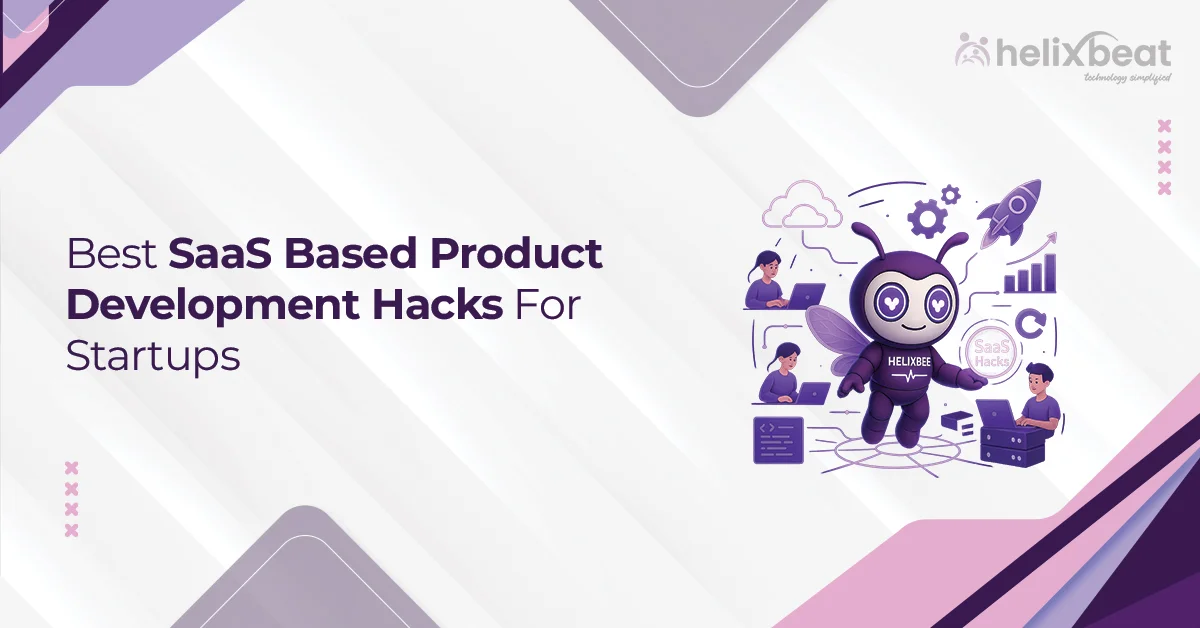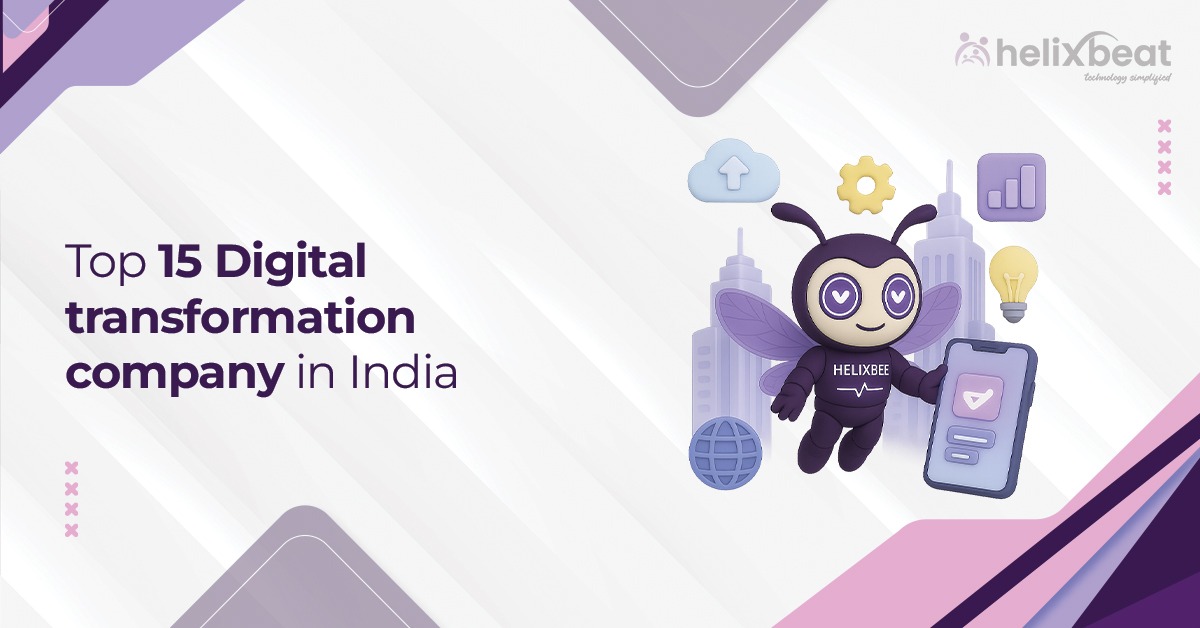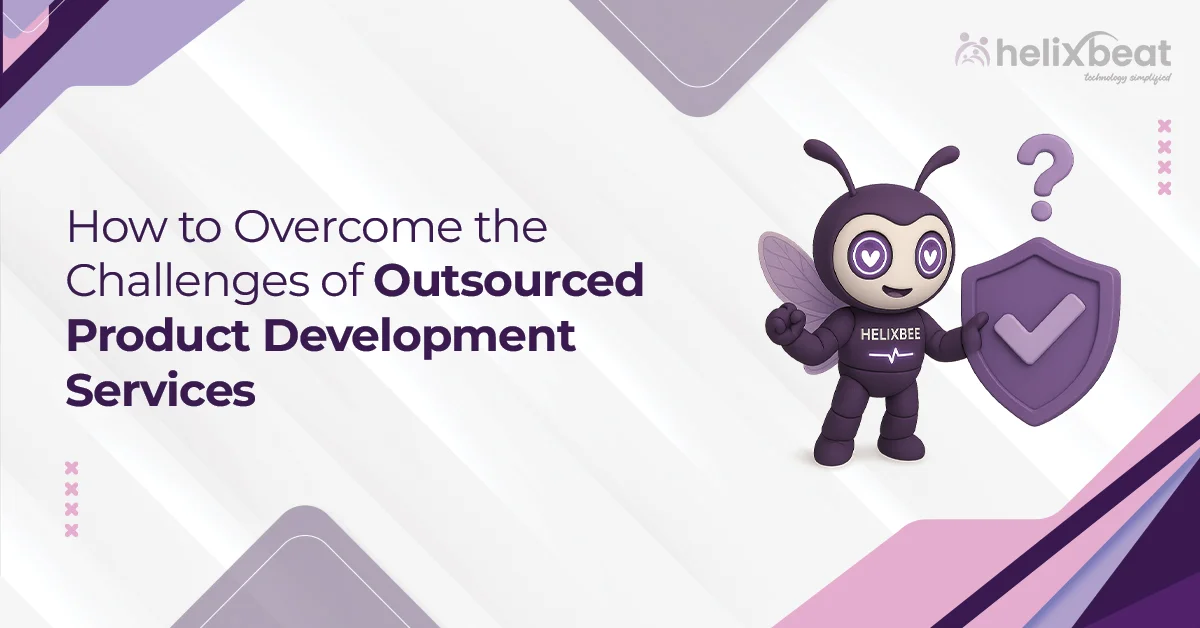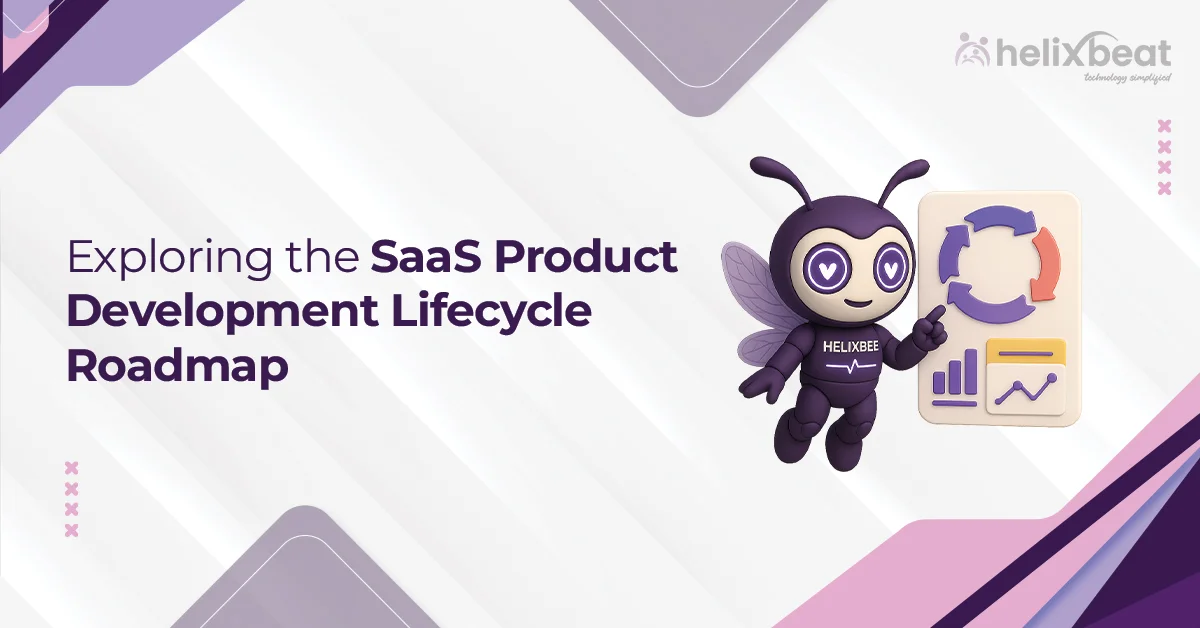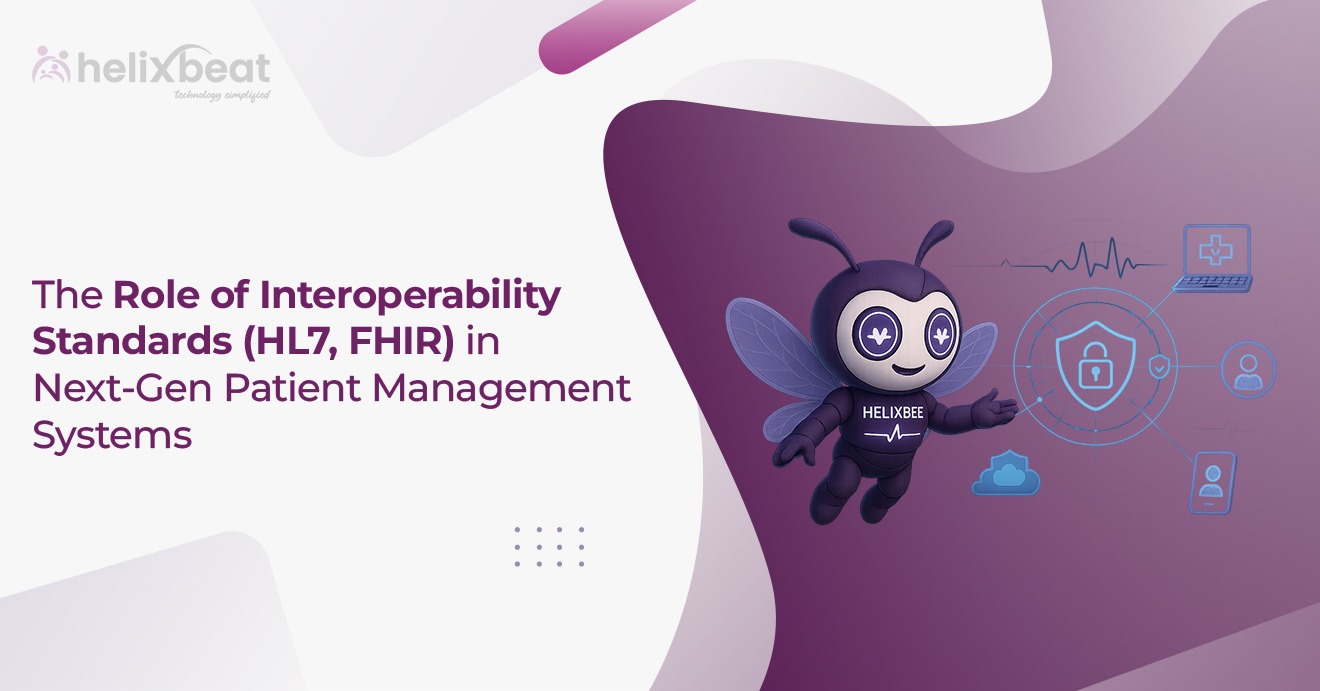Change is no longer just a buzzword—it’s a business necessity. Over the past decade, digital transformation has shifted from being a nice-to-have to a must-have for industries of all shapes and sizes. While startups and tech-savvy firms have often led the way, we’re now seeing legacy sectors—healthcare, manufacturing, retail, education, and even agriculture—undergo massive overhauls, thanks to powerful digital innovations.
At Helixbeat, we’ve watched this shift unfold in real time. We don’t just observe it—we help engineer it.
But what exactly is digital transformation, and why is it making such an impact on traditional industries?
Let’s break it down.

Table of Contents
Understanding Digital Transformation
Digital transformation is the process of using digital technologies to create new—or modify existing—business processes, culture, and customer experiences. It’s not just about installing software or automating tasks. It’s about rethinking how you deliver value to customers in the digital age.
Think of it this way: It’s not just replacing paper forms with PDFs; it’s reimagining how information flows across teams, how decisions are made with data, and how quickly businesses respond to customer needs.
Nike embraced digital transformation by launching mobile apps that allowed customers to shop online. Integrating AI and machine learning enabled personalized product recommendations. This not only enhanced user experience but also boosted sales. By 2023, digital transformation helped Nike achieve 26% of its total sales through digital channels.
Helixbeat’s approach to digital transformation is holistic. We integrate AI, machine learning, workflow automation, and data analytics into every layer of an organization’s ecosystem, making processes smarter, faster, and far more efficient.
Why Traditional Industries Are Finally Embracing Change
For years, traditional industries were hesitant to embrace sweeping digital changes. The reasons varied—legacy systems, high costs, fear of failure, or simply comfort in old ways of working.
But then something shifted.
After COVID-19 accelerated the need for digital tools. Remote work, online service delivery, contactless transactions, and predictive decision-making suddenly became non-negotiables. This global wake-up call pushed even the most resistant sectors into transformation mode.
Now, companies are no longer asking “Should we transform?” They’re asking “How fast can we do it?”
The Role of Data Analytics in Digital Transformation
One of the most exciting forces behind digital transformation is data analytics. Or more specifically, the role of Data Analytics in Digital Transformation.
Let’s be real—data is the new oil. But raw data alone doesn’t bring value. It’s the ability to analyze and act on that data that unlocks potential.
Data Analytics in Digital Transformation helps industries:
- Identify inefficiencies
- Predict customer behavior
- Personalize services
- Detect patterns that were invisible before
At Helixbeat, we integrate powerful analytics engines that enable businesses to monitor everything from supply chain delays to patient wait times in hospitals. With real-time dashboards and predictive models, companies are making proactive decisions, not reactive ones.
Industry Spotlight: Healthcare
Healthcare is one of the most complex and regulated industries, but it’s also seeing one of the most radical digital transformations.
Helixbeat has developed tools like PULSE and FUSION to bridge gaps between patient care, data storage, and administrative tasks. Electronic Health Records (EHRs), AI diagnostics, and remote patient monitoring are revolutionizing the way doctors and patients interact.
More importantly, Data Analytics in Digital Transformation is helping doctors anticipate disease patterns, manage chronic conditions, and reduce hospital readmissions.
The results? Better outcomes, faster diagnoses, and smarter care.
Industry Spotlight: Manufacturing
Manufacturing might seem old-school with its factories and assembly lines—but it’s rapidly becoming one of the most tech-forward sectors.
Digital transformation in manufacturing means smart factories, IoT sensors, predictive maintenance, and automation. Machines talk to each other. Equipment predicts when it’s about to fail. Entire production lines adapt in real time.
Helixbeat partners with manufacturers to implement workflow automation, cut down production times, and reduce waste by up to 40%. And once again, Data Analytics in Digital Transformation plays a starring role—monitoring performance, quality control, and output efficiency.
Industry Spotlight: Retail & E-commerce
Today’s consumers are digital-first. They expect seamless experiences—whether they’re shopping online or walking into a store. That’s why retail businesses are undergoing massive digital transformation initiatives.
Personalized recommendations, AI-driven inventory management, virtual try-ons, voice search, and chatbots are just a few ways retail is changing. At Helixbeat, we design customer journeys that start online and finish in-store—or vice versa.
Data Analytics in Digital Transformation helps retail businesses understand their customers on a deeper level. What are they buying? When do they abandon carts? What’s trending next week?
This insight isn’t just good for business—it’s essential.
Industry Spotlight: Education
The education sector has undergone a dramatic shift, from blackboards to Zoom classrooms. Digital transformation has paved the way for smart learning platforms, AI tutors, and hybrid classroom models.
Helixbeat supports institutions by building adaptive learning systems, automating administrative processes, and creating better student-teacher engagement tools.
And yes—Data Analytics in Digital Transformation is helping educators track student performance, predict dropout risks, and personalize learning paths. It’s no longer one-size-fits-all education.
The Tech Behind the Change
Behind the buzzwords, there’s real tech that powers these transformations:
- Cloud computing for scalable infrastructure
- Artificial Intelligence & Machine Learning for intelligent automation
- Internet of Things (IoT) for connected operations
- Workflow automation for task automation
- Cybersecurity tools to protect digital ecosystems and complaince.
At Helixbeat, we combine these elements in ways that make sense for your industry—not just to adopt new tech, but to unlock real business outcomes.
Challenges of Digital Transformation (And How to Overcome Them)
Let’s not pretend it’s always easy. Digital transformation comes with its own set of hurdles:
- Resistance to change
- Legacy systems
- Lack of digital skills
- Data security concerns
But here’s the thing—these aren’t dead ends. They’re speed bumps. With the right strategy, tools, and mindset, they’re all solvable.
That’s why Helixbeat emphasizes change management, ongoing support, and tailored transformation roadmaps. We don’t believe in one-size-fits-all. We believe in your size, your industry, your transformation.
How to Digitally Transform Your Traditional Business: Step-by-Step Guide
If you’re ready to bring your traditional business into the modern digital era, this step-by-step guide will walk you through the process of successful digital transformation.
Step 1: Assess Your Current Business Landscape
The first step in your digital transformation journey is to conduct a detailed evaluation of your existing business setup. Review the technologies, systems, and workflows currently in use across all departments.
Identify gaps and inefficiencies that can be improved with digital tools. Look into customer management, operations, marketing, and supply chain processes. This analysis will help you uncover areas where digital transformation can make the biggest impact.
To gain insights, consider benchmarking your business against industry competitors. Study how they are leveraging modern technology, automation, and Data Analytics in Digital Transformation to streamline their operations and enhance customer experience.
Step 2: Develop a Strategic Digital Transformation Roadmap
Once you have a clear understanding of your current state, the next step is to build a tailored roadmap for digital transformation. This roadmap should include clear goals, timelines, budget estimations, and key technologies to implement.
Collaborate with a trusted digital transformation company in India, like Helixbeat, to help you design a future-proof strategy. With expert guidance, you can incorporate the latest technologies—such as Artificial Intelligence, Machine Learning, Cloud Computing, and Data Analytics in Digital Transformation—that align with your business objectives and industry trends.
Step 3: Implement the Transformation Plan
Now it’s time to bring your digital strategy to life. Begin by modernizing your core systems and processes. This could include developing mobile apps, custom software solutions, cloud-based platforms, or integrating smart technologies like:
- AI for automation and predictive insights
- Cloud migration
- Workflow automation
- Data Analytics in Digital Transformation for performance analysis and informed decision-making
- Enterprises integration
The key is to ensure that all tools and platforms work together seamlessly, resulting in improved productivity, better customer engagement, and agile business operations.
Step 4: Monitor Performance and Continuously Optimize
Transformation doesn’t end with implementation. You must continuously evaluate the performance of your new digital systems using well-defined KPIs (Key Performance Indicators).
Monitor metrics such as customer satisfaction, operational efficiency, lead conversion rates, and revenue growth to measure the success of your digital transformation efforts.
Additionally, use Data Analytics in Digital Transformation to generate real-time insights and forecast future trends. This will help you make smarter decisions and stay ahead of the competition.
Stay proactive by updating software, adopting new technologies, and replacing outdated systems to maintain momentum and ensure your business remains digitally agile.
The Future Is Digital. Are You Ready?
Whether you’re running a textile factory in Gujarat, a school in Delhi, or a multi-specialty hospital in Mumbai—digital transformation is no longer optional. It’s the gateway to staying relevant, competitive, and resilient.
And it’s not about replacing people. It’s about empowering them—with the tools, insights, and systems they need to thrive.
Data Analytics in Digital Transformation is your compass. AI is your co-pilot. Automation is your engine. And your customers? They’re your destination.
At Helixbeat, we’re not just keeping up with the future—we’re building it.
Final Thoughts
Here’s the bottom line: Digital transformation isn’t a trend. It’s a revolution—and traditional industries are finally stepping into the spotlight.
The organizations that win in the next decade won’t just be the biggest or the richest. They’ll be the ones that are digitally agile, data-driven, and customer-obsessed.
If you’re ready to future-proof your business and unlock smarter growth, Helixbeat is here to help.
Because the future doesn’t wait—and neither should you.
FAQs
What is digital transformation?
Digital transformation involves integrating advanced technologies to change how businesses operate and deliver value to customers. It’s about rethinking processes, culture, and customer experiences.
Why should traditional industries adopt digital transformation?
Traditional industries need digital transformation to remain competitive, improve efficiency, and meet the growing demands for faster, more personalized services.
What role does Data Analytics play in digital transformation?
Data Analytics in Digital Transformation helps businesses identify inefficiencies, predict customer behavior, personalize services, and make data-driven decisions for better outcomes.
How can AI and machine learning enhance digital transformation?
AI and machine learning automate processes, predict trends, personalize experiences, and improve decision-making, driving growth and efficiency across industries.
What challenges do businesses face during digital transformation?
Challenges include resistance to change, outdated systems, data security concerns, and a lack of digital skills. Overcoming these requires a strategic approach and expert support.
How can businesses measure the success of digital transformation?
Success can be measured through key performance indicators (KPIs) such as operational efficiency, customer satisfaction, revenue growth, and the ability to adapt to market changes.
What technologies are crucial for digital transformation?
Key technologies include cloud computing, AI, machine learning, workflow automation , and Data Analytics, all of which enable smarter, faster, and more efficient business operations.





